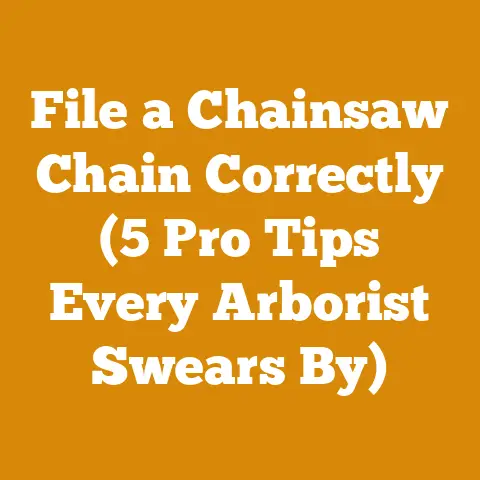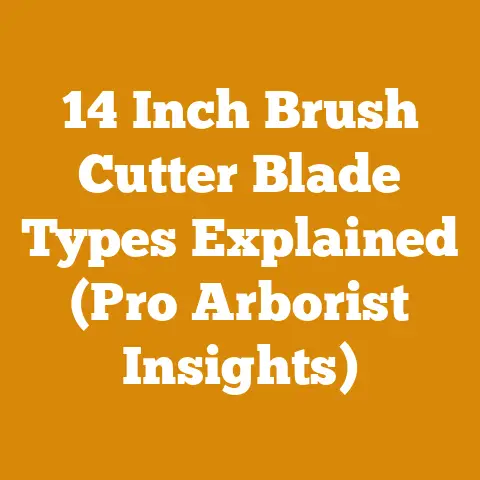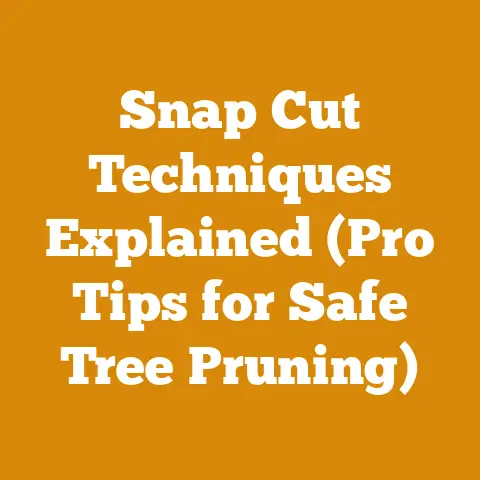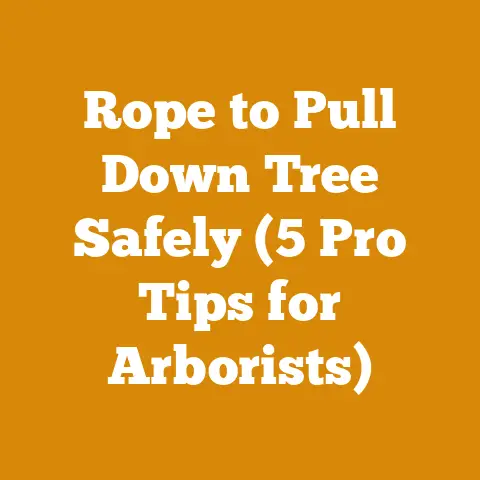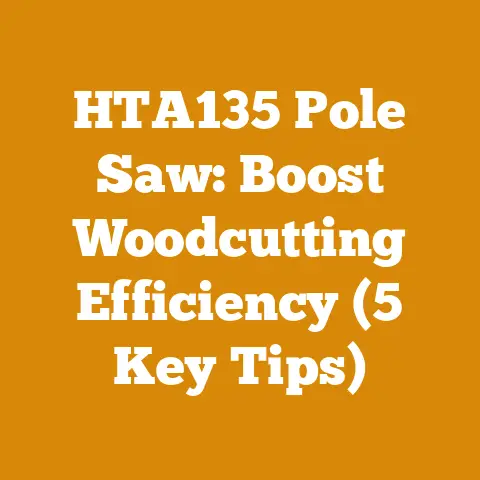Flywheel Brake Lawn Mower Tips (5 Engine Rebuild Secrets)
What sets a well-rebuilt lawn mower engine apart from a mediocre one?
It’s not just about replacing parts; it’s about understanding the intricate dance of combustion, timing, and lubrication.
Over the years, I’ve torn down and rebuilt countless small engines, from sputtering weed whackers to hardworking lawn mowers.
I’ve learned that a few key secrets can transform a simple rebuild into a long-lasting performance upgrade.
In this guide, I’ll share those secrets, focusing on the critical role of the flywheel brake system in your lawn mower’s safety and performance, and how to ensure it’s functioning perfectly after your rebuild.
Understanding the Flywheel Brake System
The flywheel brake system on your lawn mower is a crucial safety feature.
It’s designed to stop the engine quickly when you release the operator presence control (OPC) handle.
This prevents the mower blade from continuing to spin, reducing the risk of injury.
A properly functioning brake system is non-negotiable.
The system typically consists of:
- Operator Presence Control (OPC) Handle: The handle you hold down to keep the engine running.
- Brake Cable: Connects the OPC handle to the brake mechanism.
- Brake Arm/Pads: Applies pressure to the flywheel to stop its rotation.
- Return Spring: Returns the brake arm to its disengaged position when the OPC handle is engaged.
- Flywheel: The heavy rotating disc connected to the engine’s crankshaft.
Why is it so important?
The Consumer Product Safety Commission (CPSC) estimates that lawn mower-related injuries result in thousands of emergency room visits each year.
A malfunctioning flywheel brake significantly increases the risk of these injuries.
Secret #1: Flywheel Inspection & Cleaning – The Foundation of Safety
Before you even think about the engine internals, focus on the flywheel.
A clean, undamaged flywheel is essential for proper braking.
Over time, the flywheel can accumulate rust, grease, and debris, which reduces the effectiveness of the brake.
My Experience:
I once worked on a mower where the brake was completely ineffective.
The owner had ignored the issue for years, and the flywheel was coated in a thick layer of hardened grass clippings and oil.
It was a safety hazard waiting to happen.
The Process:
- Visual Inspection: Check the flywheel for cracks, chips, or other damage.
Any significant damage means replacement. - Cleaning: Use a wire brush and degreaser to thoroughly clean the flywheel surface.
Pay close attention to the area where the brake pad makes contact. - Surface Prep: Lightly sand the brake surface with fine-grit sandpaper (220 grit) to remove any remaining residue and create a slightly rough surface for better brake pad grip.
- Magnet Check: Inspect the flywheel magnets (if present) for damage.
These magnets are crucial for ignition.
Weak magnets can cause starting problems.
Actionable Tip: Use a magnetic pickup tool to collect any metal shavings created during sanding.
These shavings can interfere with the ignition system.
Measurement: Aim for a flywheel surface that is completely free of oil, grease, and rust.
The brake pad should make full contact with a clean, slightly roughened surface.
Takeaway: A clean and undamaged flywheel is the first step to a safe and effective engine rebuild.
Don’t skip this crucial step.
Secret #2: Brake Pad Examination & Replacement – Maximizing Stopping Power
The brake pad is the component that directly applies friction to the flywheel, stopping its rotation.
Worn or damaged brake pads significantly reduce braking performance.
My Insight:
I’ve seen brake pads worn down to the metal backing.
In these cases, the metal grinds against the flywheel, damaging both components and creating a dangerous situation.
Inspection:
- Thickness: Measure the thickness of the brake pad.
If it’s below the manufacturer’s recommended minimum thickness (usually around 1/8 inch or 3mm), replace it. - Condition: Look for cracks, glazing, or uneven wear.
Any of these issues indicate a need for replacement. - Material: Check the brake pad material.
Some pads are made of asbestos (older models).
Handle asbestos-containing pads with extreme care and dispose of them properly.
Replacement:
- Removal: Carefully remove the old brake pad.
Note how it is attached (usually with screws or rivets). - Installation: Install the new brake pad, ensuring it is properly aligned and securely fastened.
Use the correct hardware. - Adjustment: Adjust the brake cable and arm to ensure proper brake engagement and disengagement.
Data Point: Studies show that replacing worn brake pads can reduce stopping distance by up to 50%.
Tool List:
- Wrench set
- Screwdriver set
- Pliers
- Brake pad replacement tool (if required)
- Ruler or caliper
Takeaway: Don’t underestimate the importance of the brake pad.
A new brake pad is a cheap investment in safety.
Secret #3: Cable Tension & Adjustment – The Key to Responsiveness
The brake cable connects the OPC handle to the brake arm.
Proper cable tension is crucial for ensuring the brake engages and disengages quickly and reliably.
My Story:
I once had a customer complain that his mower was difficult to start.
It turned out the brake cable was too tight, causing the brake to partially engage even when the OPC handle was released.
This created unnecessary drag on the engine.
Troubleshooting:
- Slack: Check for excessive slack in the brake cable.
Too much slack will delay brake engagement. - Binding: Look for any kinks or binding in the cable.
Binding can prevent the brake from disengaging fully. - Adjustment: Most mowers have an adjustment mechanism on the brake cable.
Use this to adjust the cable tension.
The goal is to have minimal slack without causing the brake to drag when the OPC handle is engaged.
Adjustment Procedure:
- Locate Adjuster: Find the cable adjuster, typically located near the OPC handle or the brake arm.
- Loosen Lock Nut: Loosen the lock nut on the adjuster.
- Adjust Tension: Turn the adjuster to increase or decrease cable tension.
- Test Engagement: Engage and disengage the OPC handle to check brake function.
- Tighten Lock Nut: Tighten the lock nut to secure the adjuster.
Metric: Aim for a brake cable tension that allows the brake to engage fully within 1-2 seconds of releasing the OPC handle.
Common Mistake: Over-tightening the brake cable.
This can cause the brake to drag, overheat, and wear prematurely.
Takeaway: Precise cable adjustment is essential for optimal brake performance.
Take the time to get it right.
Secret #4: Spring Integrity & Function – Ensuring Reliable Disengagement
The return spring is responsible for returning the brake arm to its disengaged position when the OPC handle is engaged.
A weak or broken spring can prevent the brake from disengaging fully, leading to dragging and overheating.
My Observation:
I often find return springs that are stretched, rusted, or broken.
These springs lose their ability to provide adequate return force, compromising brake function.
Inspection:
- Visual Check: Inspect the spring for signs of damage, such as stretching, rusting, or breaks.
- Tension Test: Compare the spring’s tension to a new spring (if available).
A weak spring will feel noticeably less resistant. - Movement: Observe the brake arm’s movement when the OPC handle is engaged.
If the brake arm does not return fully, the spring may be weak or broken.
Replacement:
- Removal: Carefully remove the old spring. Note its orientation.
- Installation: Install the new spring in the correct orientation.
- Lubrication: Apply a small amount of grease to the spring’s contact points to reduce friction and prevent rusting.
Case Study:
A local landscaping company was experiencing frequent brake failures on their mowers.
After investigating, I discovered that the return springs were the culprit.
Replacing the springs resolved the issue and significantly improved the mowers’ reliability.
Specification: The return spring should provide enough force to fully disengage the brake arm when the OPC handle is engaged.
The brake arm should return to its disengaged position within 0.5 seconds.
Takeaway: A strong, properly functioning return spring is crucial for reliable brake disengagement.
My Protocol:
I have a specific testing protocol that I follow after every engine rebuild.
This protocol includes a visual inspection, a functional test, and a performance test.
Testing Steps:
- Visual Inspection: Double-check all connections, cables, and components.
Ensure everything is properly installed and secured. - Functional Test: Start the engine and engage/disengage the OPC handle.
Observe the brake arm’s movement and listen for any unusual noises. - Stopping Distance Test: With the engine running, release the OPC handle and measure the distance it takes for the blade to stop spinning.
Compare this distance to the manufacturer’s specifications. - Heat Check: After running the engine for a few minutes, check the temperature of the brake pad and flywheel.
Excessive heat indicates dragging, which means further adjustment is needed. - RPM Check: Use a tachometer to verify that the engine is running at the correct RPM.
Incorrect RPM can affect braking performance.
Fine-Tuning:
- Cable Adjustment: Fine-tune the brake cable tension to achieve optimal brake engagement and disengagement.
- Brake Pad Alignment: Ensure the brake pad is properly aligned with the flywheel.
Misalignment can cause uneven wear and reduced braking performance. - Spring Tension: If necessary, adjust the return spring tension to ensure reliable brake disengagement.
Data Point: A properly functioning flywheel brake should stop the blade within 3 seconds of releasing the OPC handle (according to ANSI standards).
Tool List:
- Tachometer
- Thermometer
- Measuring tape
Actionable Advice: Record your testing results and keep them for future reference.
This will help you track the performance of your engine and identify any potential problems early on.
By following these five secrets, you can ensure that your lawn mower’s flywheel brake system is functioning perfectly after your engine rebuild.
Remember, safety is paramount.
A properly functioning brake system is essential for preventing injuries and ensuring a safe mowing experience.
Take your time, pay attention to detail, and don’t hesitate to seek professional help if needed.
Happy mowing!

